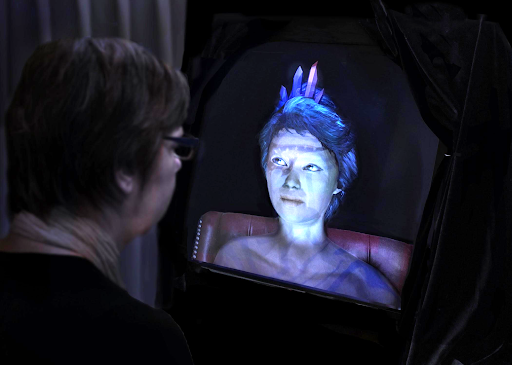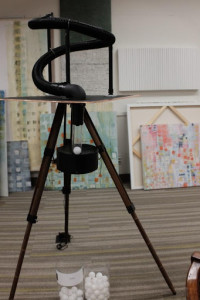Two Truths and a Lie [no longer on exhibit]
This piece incorporates an avatar who relates a tale based on a given prompt such as, “When I was very young . . . “ There are a series of such prompts, and for each, two answers are recorded. One, being a response I recorded auditorily from my partner with a predominantly happy and healthy childhood and a traditional white male upper middle class American upbringing. The second being a written response from my own life as a mixed race non-male raised in extreme poverty. Each parallel response runs approximately the same length — i.e. the recording plays for the same length of time as is set to show the written response in the form of one line subtitles across a standard screen in a legible font size.
Within the piece, the avatar invites a participant to sit down, get cozy, and engage in a tale. When the participant does so, the avatar relates the auditory response ( I record my friend’s story in my own voice for my avatar, hence ‘two truths’) while the written one is shown as subtitles — a somewhat jarring effect as they are of course not synced. The subtitles themselves are in a faded, transparent text _until_ the participant’s gaze strikes them, at which point they become fully opaque. At the conclusion of the tale, if the participant spent enough time with their gaze reading the subtitles (as determined by my algorithm), that version of the response is marked as ‘revealed’ — that version being the ‘truth’. Then, across the room, a rube-goldberg-esque contraption drops a single white ball, either into an unlabeled glass container or into one labeled “truth”.
At the end of the day, the number of balls in the containers reflect the number of participants who read the subtitled story. Ultimately, it poses the question whether people will actively combat confusion, misdirection, and frustration in order to learn a less than ideal tale. Will they return to try to reveal that story if they find they missed it the first time? Are some stories more important than others? What senses do we privilege over others? What outcomes do we privilege? Do we need a voice? The piece has been shown for a total of 21 days so far (the ball indicators are reset each day), and the truth never wins out, my stories have hardly ever been ‘heard’.

